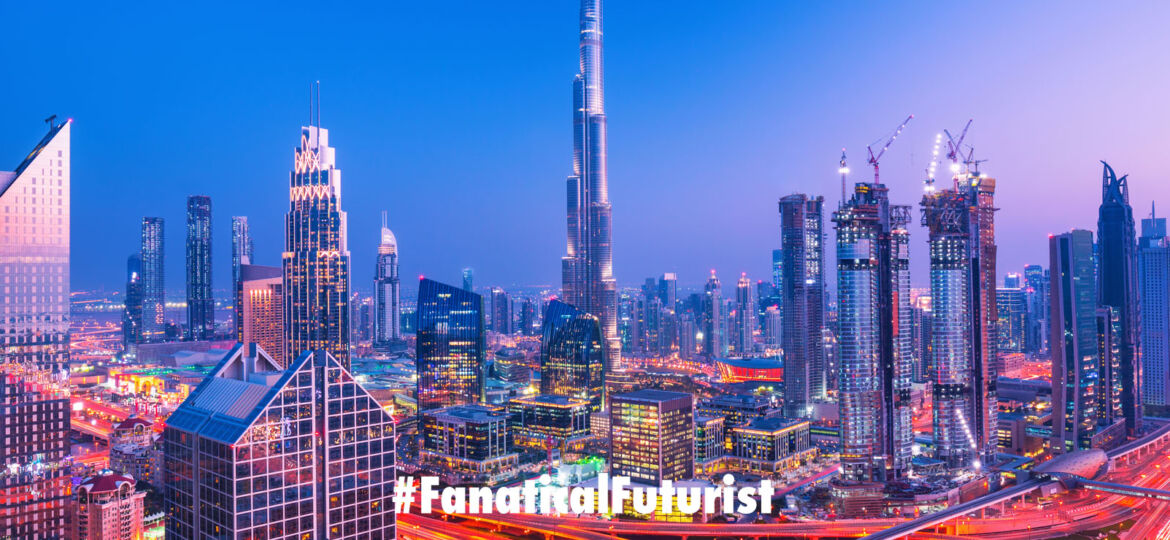
WHY THIS MATTERS IN BRIEF
Dubai is determined to take the lead and become a hub for the development of futuristic technologies, and now they’re pushing the boundaries again.
The ruler of Dubai is laser focused on turning Dubai in to a hub for the development of future technologies, something I touched on in my speech there in front of His Excellency Sultan Ahmed Bin Sulayem earlier this year, and this week His Highness (HH) Sheikh Mohammed bin Rashid Al Maktoum, Vice President and Prime Minister of UAE and Ruler of Dubai, launched the “Dubai 3D Printing Strategy,” a strategy he called a “unique global initiative that will exploit the technology for the benefit of mankind.”
Yes, Dubai’s glittering skyline embraces yet another futuristic technology, and HH also re-affirmed that Dubai and the UAE, will continue their quest become the global leaders in the adoption of future technologies. Coming on the back of news that Dubai will launch the world’s first flying taxi service and build the world’s first Hyperloop network and robot police force, put the entire Emirate on the blockchain, and go full tilt into fully autonomous transportation, while at the same time 3D printing the world’s first 80 storey skyscraper, it has to say it looks like the latest initiative will be in good company.
“Our vision for development is driven by a deep understanding of the future needs, and built on proactive ideas because we want to be in first place globally. Our methodology for development is based on the launch of initiatives that can be applied anywhere in the world and creating a global model for not only our economy but also for the global economy,” said HH, before continuing, “the future does not wait for those who hesitate and slow down. The next stage requires us to act fast and utilise the opportunities.”
“The UAE is presenting to the world today the first integrated and comprehensive strategy to exploit 3D technology to serve humanity. We have also framed practical plans and precise goals to turn the strategy into reality, the reality that will contribute to the progress and prosperity of the world and help preserve our human heritage.”
“The future will depend on 3D printing technologies in all aspects of our life, starting from houses we live in, the streets we use, the cars we drive, the clothes we wear and the food we eat,” he said, adding, “this technology will create added economic value and benefits worth billions of dollars during the coming period. We should have a share in this growing global market. This technology will restructure economies and labour markets as the use of unskilled labour will come down compared to the current situation, especially in the construction sector. It will also redefine productivity because the time needed for 3D printing of buildings and products will be 10% of the time taken in traditional techniques.”
“Our key goal is to ensure that 25 percent of buildings in Dubai are based on 3D printing technology by 2030, and we will raise this percentage with the development of global technology as well as growth of market demand. We believe that this technology is capable of transforming the construction sector by lowering costs and reducing the time it takes to implement projects. It will also help reduce manpower requirements as well as waste generated from construction which can be harmful to the environment. We will also focus on utilising this technology in other vital sectors such as medicine and consumer products to offer goods and services at competitive prices.”
The three major sectors covered by the initiative are construction, medical products, and consumer products.
The construction and building sector will focus on lighting products, bases and foundations, construction joints, facilities and parks, buildings for humanitarian causes and mobile homes, as well as galleries, stores and residential villas, and HH has the expectation that this sector will contribute about Dh3 Billion (USD $600 Million) to the economy by 2025. Furthermore, he also expects that the use of 3D printing in Dubai’s construction sector will increase by 2% in 2019 and then accelerate after that, depending on the development of the technology and its future reliability.
In the medical products sector, the focus will be on developing 3D printed teeth, bones, artificial organs, such as the brains, kidneys and skin, for example, that have already been printed elsewhere, medical and surgical devices, and hearing aids, and this sector is expected to contribute Dh1.7 Billion (USD $340 Million) by 2025. Then finally, but not least, the consumer products sector will focus on household items, including optics, fashion jewellery, children’s games and fast food, with an expected contribution Dh2.8 Billion (USD $560 Million) by 2025.
The strategy also has five main pillars which are funding, infrastructure, market demand, regulation and talent.
The funding pillar will provide financing alternatives as well as investment support to develop the technology and expand its scope of application, the infrastructure pillar will aim to provide the right infrastructure and the support of research and development to attract the world’s largest companies in this field, and the market demand pillar will promote the application of 3D Printing technology within various sectors, and focus on bringing the prices of the products down to competitive levels while maintaining quality.
Meanwhile, the regulation pillar will focus on the development of regulatory frameworks for the use of 3D printing technology within various sectors and the specifications of materials that will be allowed to be used in the printing process, and the talent pillar will emphasise and build the local talent capabilities of researchers, designers and innovators, and bring the best minds from around the world in the 3D printing field.
















